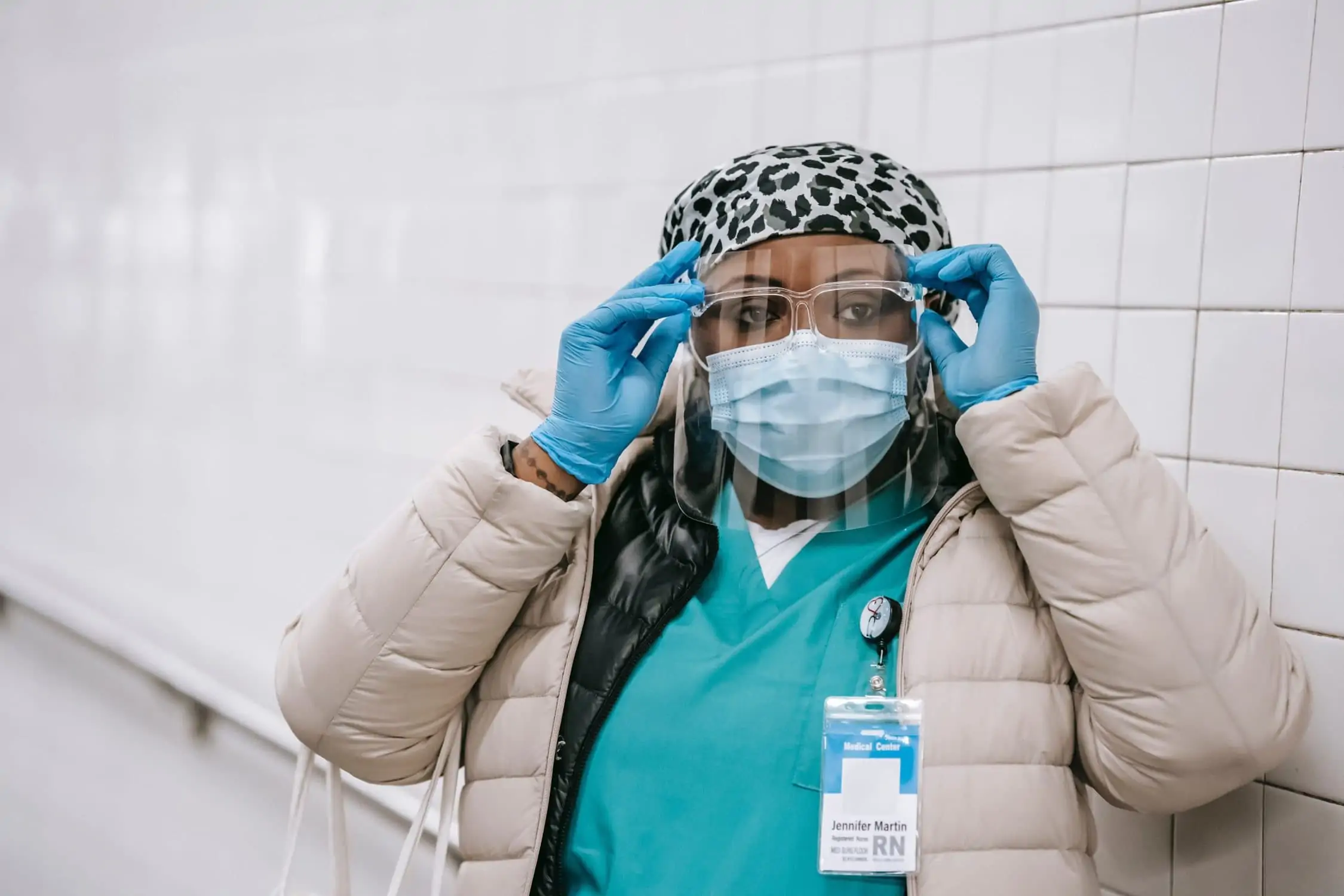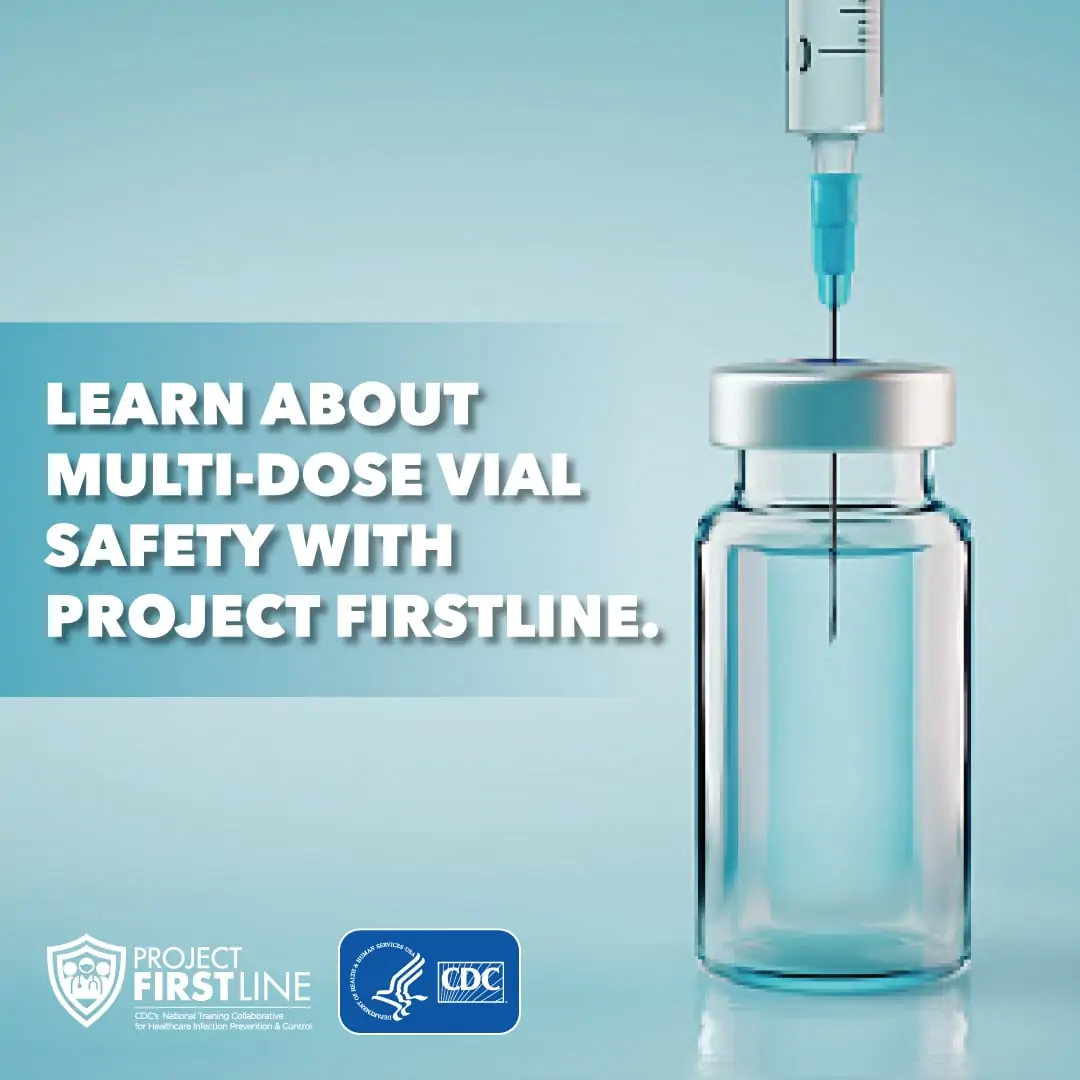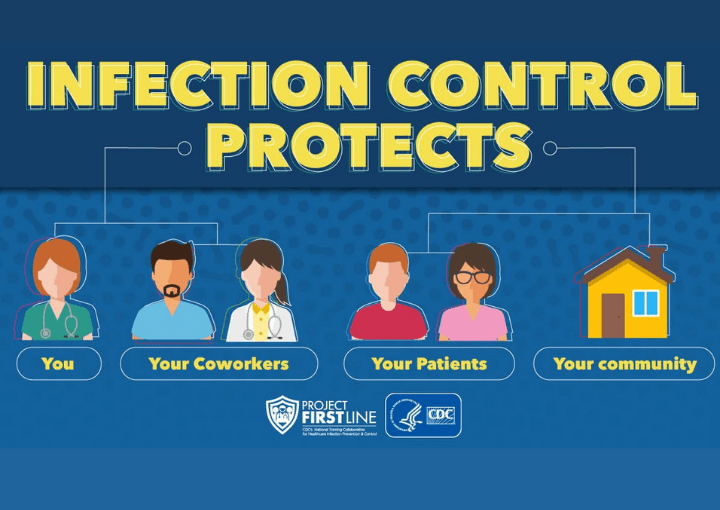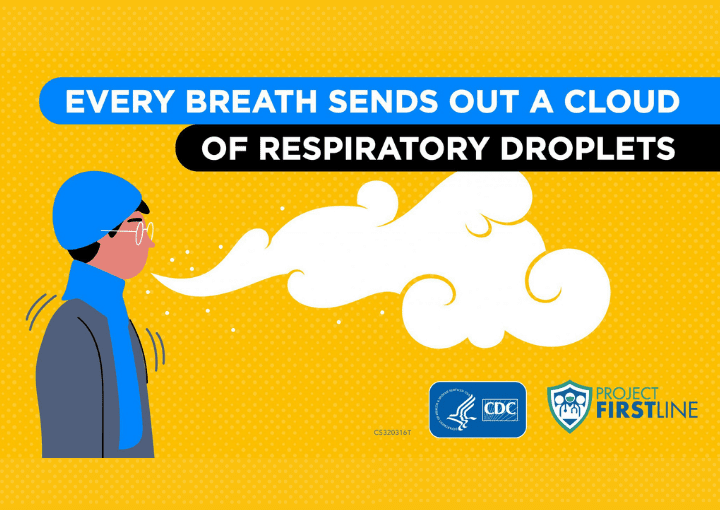
Infection Control for Professionals
The Project Firstline program is a national training collaborative led by the Centers for Disease Control and Prevention (CDC) in partnership with ANA and the American Academy of Pediatrics.

Do We Really Have to Talk About Hand Hygiene? Again?
Hand hygiene is important in healthcare because cleaning your hands reduces the spread of germs, both from you to patients and the environment, and from patients and the environment to you.
Every day, you touch more things than you realize. Germs are everywhere, not just in healthcare facilities. They are also in our homes and outside.
In healthcare settings, having clean hands is especially important because you are more likely to come into contact with things that carry germs, like blood, saliva, and waste; and you’re more likely to touch patients at risk for bad infections.
- Germs can spread easily from hands, because you use them so much at work, and they come into contact with so many surfaces, devices, and other people.
- Some parts of the hand make it easier for germs to grow, like between fingers, under the fingernails, or in any break in the skin, such as a rash or cut.
- Viruses, including SARS-CoV-2, the virus that causes COVID-19, bacteria like S. aureus and C. difficile, and fungi like C. auris can stick to your hands and be carried around.
Safety Tips for Giving Vaccines from a Multi-dose Vial
How Do I Safely Use A Multi-dose Vaccine?

Multi-Dose Vials and Infection Control
Many vaccines, including the current vaccines for COVID-19, come in small bottles with more than one dose inside. These are known as multiple-dose, or “multi-dose” vials. Multi-dose vials can be used to vaccinate more than one patient.
It is important to use multi-dose vials safely, because if anything gets inside the vial, it can cause it to get dirty or spoiled (contaminated), and it will have to be thrown away. Multi-dose vials must be handled correctly, including cleaning the rubber top with alcohol before each use, to ensure they are not contaminated:
- Use a brand new needle and syringe every time you access the vial.
- If a multi-dose vial is contaminated by a used needle or syringe, every patient who gets an injection from that vial after the contamination occurs could get hepatitis or HIV. Some patients have even died from hepatitis after getting a contaminated injection.
- Remove any contaminated multi-dose vials from use immediately and notify public health authorities if anyone might have been exposed to contaminated contents.
- If a multi-dose vial is contaminated, everyone who got a dose from that vial has to be contacted and followed so that they get information about what happened, and so they can be tested to find out whether they got infected.
How Do I Safely Use a Multi-Dose Vaccine Vial?
There are infection control steps you must take to use multi-dose vials safely, reduce the chance of contamination, and protect patients. Always prepare a multi-dose vial in a space that is clean and away from patients where you can safely draw up the doses and prepare the vaccine.
- Do not bring multi-dose vials into spaces where patients are, like a vaccination station where the patient is getting the shot or into a patient room.
- Before touching any vials, clean your hands with alcohol-based hand sanitizer or soap and water.
- Make sure that the label says it is a multi-dose vial and check for the expiration date. If the date has passed, do not use it.
- Always use a brand-new, sterile needle and a brand-new, sterile syringe for every vaccine dose. You should never use a needle or syringe that has been used on a patient.
- Clean the top part of the vial, where you will stick the needle in, by rubbing it with a sterile alcohol prep pad. Let the alcohol dry before you stick a needle into the vial to kill things like bacteria, fungus, and viruses on the outside that the needle can pick up as you push it in.
- Follow the vaccine maker’s instructions for how long you can use the vaccine after you first access it, and when it should be thrown away. If there is an extra full dose of vaccine left in a vial, and you are still within the time that it can be used, you can use that dose on a patient. Throw the vial away if there is some vaccine left, but not enough for a full dose. Never “pool” or mix vaccine from different vials to try to make one full dose.
- Always follow the vaccine maker’s instructions for how to store vaccine so that it doesn’t spoil or stop working.

Personal Protective Equipment
- Every time you put on your N95, a “user seal check” is needed to make sure you have a good seal — it’s possible to put on your N95 using the correct technique and still not have a good seal around all the edges.
- If there’s a leak or bad seal, then it’s likely you’ll breathe in unfiltered air from around the sides of the N95.
- This is also why some facial hair can be a problem – having facial hair that sits where your respirator needs to seal to your face can cause small leaks where unfiltered air can get in.
- The company that makes your N95 will have instructions on how to do a user seal check for your specific type of N95. Most of the time, the best way to check your seal is with a “positive pressure” check by breathing out gently while blocking the paths where air might escape to make sure there aren’t any leaks around your face, or in the filter itself.
- Make sure there’s a little buildup of air inside the N95, and that air doesn’t leak around the sides.

If the pressure doesn’t build up, or you find a leak:
- If air is leaking around your nose, use both hands to mold the metal nose strip to the bridge of your nose.
- It’s important to use both hands and start from the top – if you use just one hand, or push the sides in and “tent” or pinch the nose clip, you won’t get a complete seal, and air will escape out the top.
- Readjust the straps to get a better seal.
- You can’t make the straps longer or shorter, but you can move them slightly to different areas on the top and at the base of your head.
- See where the straps work best for you but be careful not to cross them or place them directly behind the ears.
- If these don’t work and if there is still a leak, you may need to be fit-tested with a different size or model, the N95 may be worn out and you need a new one, or you may need a different type of respirator.